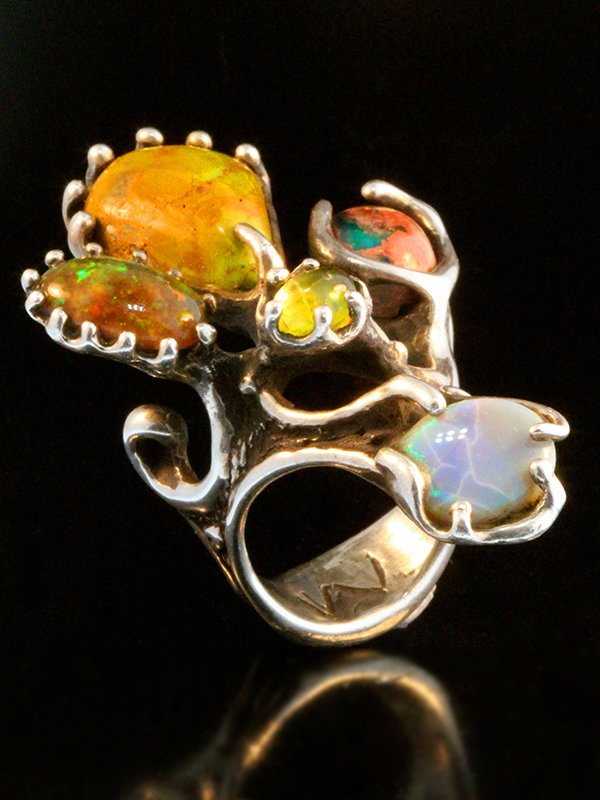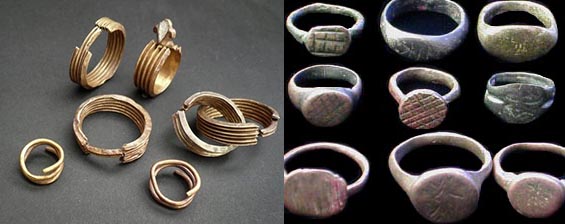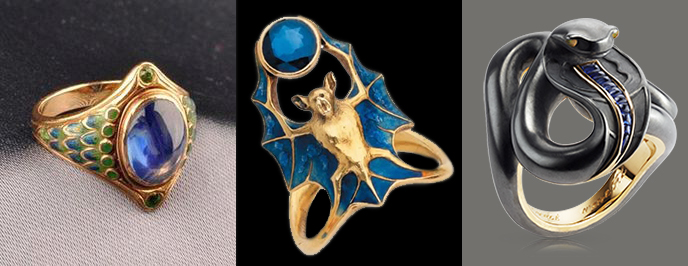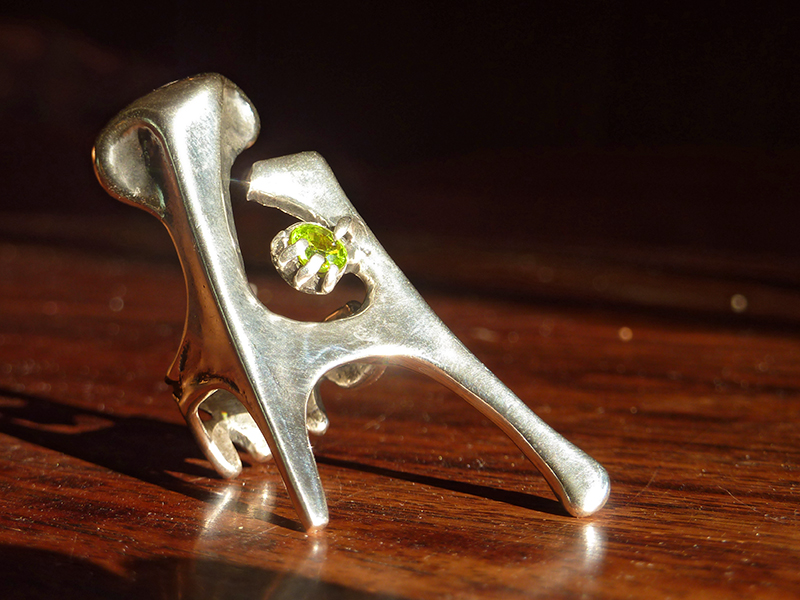
A Bob Winston ring in the modernist style from Marty’s personal collection. Solid sterling silver set with semiprecious stones.
Happy New Year Everyone!
For us here at Marty Magic, the cycling of the seasons and the “ringing” in of the New Year brings rings to mind! We celebrate these beginnings and endings with our January ring sale. This time around we thought we’d also take a moment to look into the history of rings, their symbolic meaning in Western culture, and the specific designers who have influenced Marty’s ring designs over the years.

Assortment of ancient rings – Egyptian (left) and Roman (right).
Though it might seem odd to talk about the “beginning” of rings, given how common they are, Readers’ Digest claims that their earliest use dates back to prehistoric times. Cavemen, they write, used organic fiber cords tied around their mates’ wrists and ankles to “claim their spirits.” Thus, even in the very beginning, rings were symbolic of “romantic” relationships — if there was a such a thing in prehistory! The Ancient Egyptians, writes Jewelry TV, were among the first people to place rings on the modern “ring finger,” believing that a vein ran directly from there to the heart. This belief was later perpetuated by the Romans, who were some of the first to fashion rings from metal.
Skipping forward a few hundreds of years to the late 1800s, artists in Europe and the United States started an art movement now known as “Art Nouveau.” Art Nouveau works draw heavily on designs and structures from nature, especially from plants and animals. Most have sinuous curves and are expressionistic rather than strictly realistic. Some of Marty’s favorite Art Nouveau rings are pictured below: the works of Louis Comfort Tiffany (of Tiffany & Co.), René Jules Lalique, and Fabergé.

Trio of Art Nouveau Rings. From left to right: Tiffany & Co., René Lalique, and Fabergé.
In the 1930s, artists across many different disciplines began designing increasingly abstract and “free” works of art. This grew into its own philosophical and artistic movement called “Modernism,” which encompassed styles such as new expressionism, cubism, and dada. Marty’s first exposure to Modernism was at University of Redlands where she studied jewelry design under the guidance of Leon Moburg. Marty was strongly drawn to the style and felt a connection to the movement. Although she was too young to ride the Modernist wave, she brushed shoulders with several significant artists of this period. Modernist jewelry designer Bob Winston would later became a close friend and inspiration – you can see his lovely rings at the top and bottom of this post. While living in Southern California, Marty visited the Peter Macchiarini gallery in North Beach frequently and was strongly influenced by Claire Falkensteins sculpture and jewelry. One can see the influence of both the Art Nouveau style and the Modernist movement in much of Marty’s work.

A Bob Winston ring in the modernist style, from Marty’s personal collection. Sterling silver set with a peridot.
Rings have been significant throughout history, the designs ranging from simple bands to bodacious rings encrusted with gemstones. The ring is an unbroken circle; a symbol of the infinite; of love – power – commitment and status. Check out our selection of rings over at the Marty Magic website and take 15% off on any ring during the month of January. Use coupon code RING15 at checkout!
Happy New Year!
